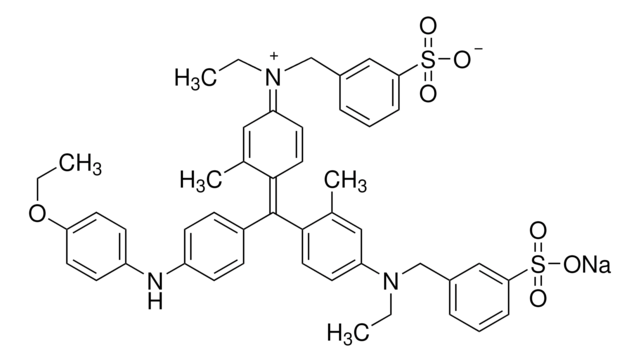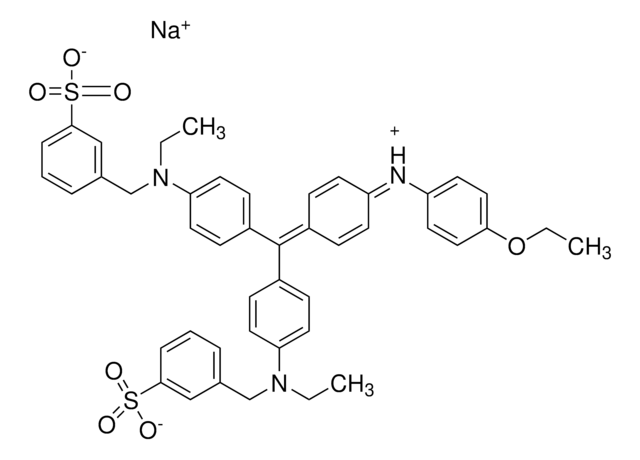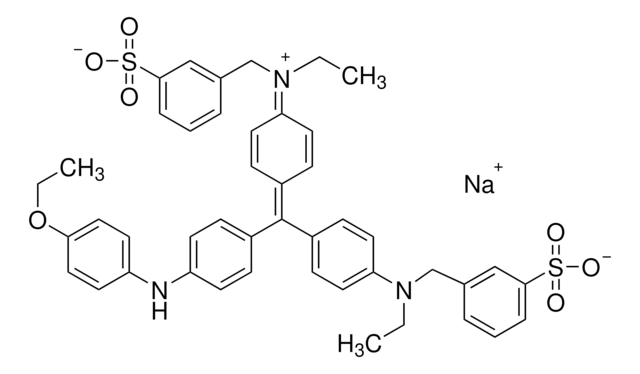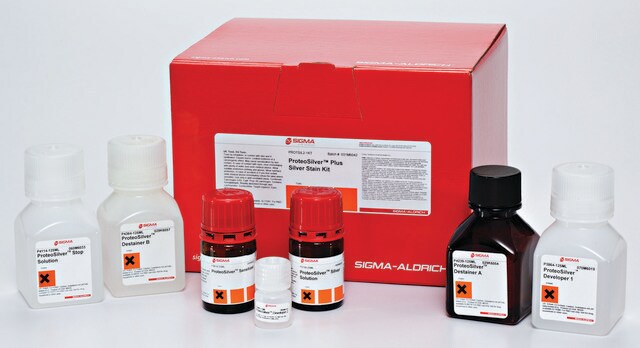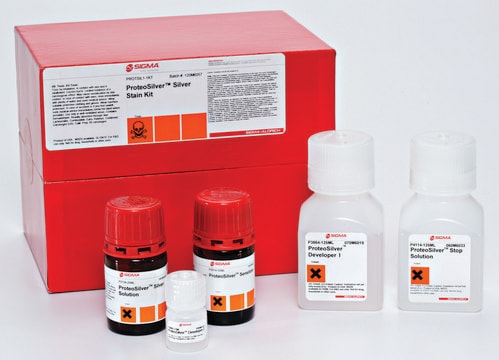G1041
EZBlue™ Gel Staining Reagent
Sinónimos:
protein gel stain, protein stain
About This Item
Productos recomendados
Descripción general
Aplicación
Características y beneficios
- Premixed solution eliminates the time and effort required to prepare the stain
- Increased sensitivity ensures that low abundance proteins can be detected (as little as 5 ng)
- Rapid reaction significantly reduces the amount of time required to stain and rinse
- No solvent waste so you save time and money by eliminating hazardous material disposal
Otras notas
Información legal
Producto relacionado
Palabra de señalización
Warning
Frases de peligro
Consejos de prudencia
Clasificaciones de peligro
Eye Irrit. 2 - Met. Corr. 1 - Skin Irrit. 2 - STOT SE 2
Órganos de actuación
Eyes,Central nervous system
Código de clase de almacenamiento
8A - Combustible corrosive hazardous materials
Clase de riesgo para el agua (WGK)
WGK 2
Punto de inflamabilidad (°F)
Not applicable
Punto de inflamabilidad (°C)
Not applicable
Equipo de protección personal
Faceshields, Gloves, Goggles, type ABEK (EN14387) respirator filter
Certificados de análisis (COA)
Busque Certificados de análisis (COA) introduciendo el número de lote del producto. Los números de lote se encuentran en la etiqueta del producto después de las palabras «Lot» o «Batch»
¿Ya tiene este producto?
Encuentre la documentación para los productos que ha comprado recientemente en la Biblioteca de documentos.
Los clientes también vieron
Artículos
The possible causes and potential remedies for challenges encountered during preparation of samples for SDS-PAGE (sodium dodecyl sulfate polyacrylamide gel electrophoresis) and optimizing electrophoresis conditions.
The use of PNGase Fast denaturing buffer and enzyme yielded results similar to a conventional 20-hour protocol with overnight digest while reducing workflow time to about 1 hour with a 15-minute digest.
To meet the great diversity of protein analysis needs, Sigma offers a wide selection of protein visualization (staining) reagents. EZBlue™ and ProteoSilver™, designed specifically for proteomics, also perform impressively in traditional PAGE formats.
Bis-Tris gels and buffers for superior protein resolution compared to traditional tris-glycine gels.
Nuestro equipo de científicos tiene experiencia en todas las áreas de investigación: Ciencias de la vida, Ciencia de los materiales, Síntesis química, Cromatografía, Analítica y muchas otras.
Póngase en contacto con el Servicio técnico